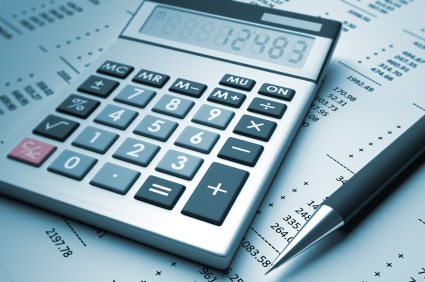You probably know how much you make each year, and maybe even what you spend each month, but do you know your net worth? And more importantly, how to use the information in a way that matters?
Knowing your net worth can have a significant impact on your budgeting, spending, and retirement plans.
What is net worth?
Simply put, net worth is everything you own minus what you owe. While online calculators can be used to run the actual numbers, it’s important that you determine assets from debts accurately, to arrive at the most accurate breakdown.
Create a personal balance sheet with two categories: What you own (assets), and what you owe (liabilities). The “owned” category should include checking, savings, certificates of deposit, investment and brokerage accounts, retirement and college savings plans, and the value of vehicles you own outright (which can be found using Kelley Blue Book).
If you own furniture, electronics, art, technology, or jewelry worth significant value, those items are assets, as is the equity (what you own) in your home or investment property. (It is not the market value of your home — unless you own it outright).
Conversely, the “owed” category should include the balance you owe on your mortgage loan, student loan debt, auto loans, credit card bills, taxes owed, alimony or child support, and lease obligations you may be bound to for a car or rented dwelling.
Though actual calculation of net worth is simply subtracting what is owned from owed, it’s imperative that your balance sheet “inputs” are accurate.
Financial expert Steve Knudson of Intermountain Financial Group says that relying too heavily on net worth becomes problematic when based on unrealistic projections of unpredictable forces.
For example, if you’re invested in stock markets and the economy is booming, so is your net worth. Market values plunge one day — your net worth goes with it. An overstated net worth analysis can lead to borrowing things you can’t actually afford, and underestimating what you need to put aside for retirement.
“I have seen far too many portfolios trashed due to over aggressive valuations on real estate and private company stock valuations that have never materialized,” Knudson says.
Here are three simple ways to put your net worth balance sheet into action:
See where you stand with retirement
Forbes contributor and financial adviser David John Marotta, president of Marotta Wealth Management, says that saving 15% of your take home pay each year throughout your working life should theoretically provide sufficient savings for retirement, even with the ebb and flow of the market. Obviously, the exact number that percentage amounts to will change with your salary throughout the years.
Using your net worth balance sheet, you can easily arrive at a very basic spot check of how well you’ve planned for retirement so far.
Let’s suppose you started contributing to retirement five years ago, and your annual take home pay has been $40,000 for that time. Sticking to basic math, you should have about $30,000 earmarked in a retirement account. Of course, you may have more, or less, based on the investments you’ve made and employer matches, but the 15% rule is a simple way to see where you currently stand. If you’ve fallen short, you’ve got some catching up to do, either by spending less, saving more — or a combination of both.
Start a debt elimination strategy
Retirement planning is about strategizing a way to live in an essentially income-less scenario, aside from what you’ve saved. Ideally the “owed” section in your net worth balance sheet will be blank when you retire — even if that’s far from your reality today.
[pull_quote align=”left”]The steps you take now to eliminate debt can be just as important as what you contribute into retirement savings, particularly if the debts you carry have you paying far higher interest rates than your investments earn.[/pull_quote]The steps you take now to eliminate debt can be just as important as what you contribute into retirement savings, particularly if the debts you carry have you paying far higher interest rates than your investments earn.
Using your “owed” column, formulate an action plan for long-term debt elimination that will allow you to eventually enter into retirement debt-free. Start with the highest interest rate loans first, and work your way down. As you whittle loans away, you’ll free up more funds to build liquid assets, and invest for retirement.
Focus on long-term planning
Knudson suggests a triangle-style approach to net worth analysis that focuses on three critical aspects of long-term financial management: income, access and growth.
To determine income needs, calculate your monthly fixed expenses compared to your monthly cash flow. If monthly income sufficiently covers those costs, Knudson says “there is no need to “burden an investment portfolio with bonds or low performing investments.”
To evaluate access, add up the total of your “owned” assets that are completely liquid, meaning that if a financial emergency happened tomorrow, you could withdraw your money without paying fees or penalties, or selling assets that may or not be worth peak value.
If most of your “owned” column consists of property, stocks, bonds or mutual funds, consider shifting some assets into more liquid savings tools to protect your long-term financial affairs. Once you’ve determined income and access, Knudson suggests investing the balance of cash in a long term growth portfolio to hedge against inflation, provide for appreciation, and invest for opportunities.




